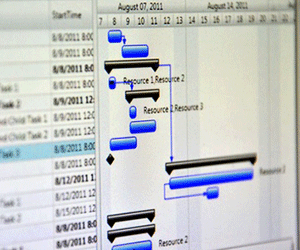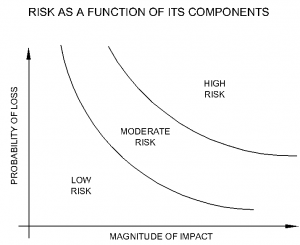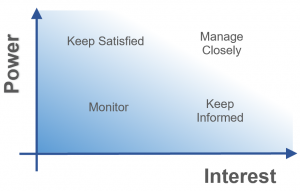
Few projects out there are as big and complex as the Olympic games. They’re truly in a category of their own due to their massive visibility and the world scale construction projects leading up to it. It gets awarded by the International Olympic Committee (IOC) to the host city more than 10 years in advance of the two-week long event, and the entire decade is spent in a massive act of preparation.
The one of a kind nature of the Olympic games brings with it unique challenges. Personally, I think it is a miracle that more stuff hasn’t gone wrong at the Olympics over the years, with the sheer number of viewers as well as spectators who make the journey to the actual events and the amount of planning that has to go into it.
But what makes it run so smoothly? Surely there are some project management principles that the organizing committee and project planners must perform flawlessly. In this post, I’ll talk about three of the most important:
- Risk Management
- Stakeholder Engagement and Communication
- Cost and Schedule Control
Risk Management
All large megaprojects spend a considerable amount of time managing risk, but the Olympic games are once again in a league of their own in this category. From losing judges to terrorist attacks that threaten the entire games, preparing for the unexpected is an everyday task for the Olympic project management team. Every moving part has to be analyzed for potential unexpected events.
The project management team would start by identifying potential risk events, for example:
- A judge loses their equipment.
- A shark is spotted in the triathlon venue.
- A terrorist attack occurs.
The first step is to identify risk events across various domains, such as security threats, logistical challenges, natural disasters, and technological failures. Potential risk events are brainstormed, that is, all ideas are put forward and creativity is encouraged. Then, the team spends some time in analysis and removes those that are extremely minor. The final product is called a Risk Register, or a list of all the significant risk events.
Following the creation of the Risk Register, each risk event is analyzed according to its two underlying factors:
Risk = Probability x Impact
- Probability: The odds the event will occur
- Impact: The degree of loss when it occurs
The two factors can be classified on a 1-10 or and A-E scale. The can also be quantified with a number: There’s a 1% chance that the stadium will be $1 million over budget, so we should have a contingency of 0.01 x $1 million.
Once the risk has been analyzed, a risk response plan is drafted up for the risk events that are deemed significant enough to need it.
Finally, the risk response plans are distributed and communication with the relevant stakeholders becomes the primary focus. Response plans are rehearsed if necessary to ensure the efficient implementation when they are needed. Each event has a trigger (something which determines when the response plan is implemented). Preventive measures aim to reduce the likelihood of risks occurring, such as enhanced security protocols or robust infrastructure design. Contingency plans prepare for swift and effective responses if risks materialize, ensuring minimal disruption to the Games.
The risk response plans are living documents. When circumstances change or new information comes to light, the plans are updated and communicated to the stakeholders.
Each identified risk is then analyzed for its likelihood and potential impact, prioritizing those that could significantly disrupt the event. High-priority risks receive focused attention, with detailed assessments to understand their triggers and consequences.
Stakeholder Engagement and Communication
 Exceptional stakeholder management is crucial in the planning and organization of the Olympic Games due to the vast array of involved parties, each with unique interests and needs. Key stakeholders include the International Olympic Committee (IOC), host city authorities, athletes, sponsors, media, local communities, and international spectators.
Exceptional stakeholder management is crucial in the planning and organization of the Olympic Games due to the vast array of involved parties, each with unique interests and needs. Key stakeholders include the International Olympic Committee (IOC), host city authorities, athletes, sponsors, media, local communities, and international spectators.
Effective engagement starts with identifying all stakeholders and understanding their expectations and concerns. Like with the risk events, a Stakeholder Register is created by brainstorming, then trimming the list. This register then becomes the official list of stakeholders and gets managed like any part of the project.
The Olympic games would have a plethora of stakeholders, including:
- Athletes
- Fans
- The host city
- Local communities
- Event planners
- Judges
- Local businesses
- Sponsors
Anyone who has any interest in the project is a stakeholder, and for the Olympics, this includes the public. Sports fans (and olympic fans) are heavily invested into the Olympic games and would have a negative response to its cancellation.
Each stakeholder is analyzed as to two factors:
- Power
The stakeholder’s ability to affect the outcome. For example, the host city has alot of power to change (or cancel) an event or the entire Olympic games themselves. - Interest
The stakeholder’s level of concern for project. For example, athletes would have a high concern but local businesses might have a low concern.
Transparent communication channels are established to provide regular updates, gather feedback, and address issues proactively. This involves frequent meetings, briefings, and reporting systems to ensure that all parties are informed and aligned with the project’s progress and objectives. Collaboration with local communities is essential to gain their support and minimize disruptions caused by the event. Engaging sponsors is also critical, as their financial contributions and branding efforts play a significant role in the success of the Games.
Media partnerships are managed to ensure broad and positive coverage, enhancing the global reach and impact of the event. Athletes’ needs are prioritized to ensure they have the best possible environment to perform. By fostering a culture of inclusion and cooperation, project managers build strong relationships with stakeholders, facilitating smoother decision-making and conflict resolution.
This collaborative approach helps in creating a sense of shared ownership and commitment towards the successful execution of the Games. Exceptional stakeholder management not only ensures the operational success of the Olympics but also enhances its legacy by fostering goodwill and long-lasting positive impacts on the host city and international community.
Cost and Schedule Control
 Ten years of preparation for a two week long event mean that being behind schedule and over budget is not an option. The financial investment for hosting the Olympics runs into billions of dollars, encompassing the construction of sports venues, infrastructure development, security, technology, and operational expenses. Effective cost control ensures that the project stays within budget, preventing cost overruns that can burden the host city and country with long-term financial liabilities.
Ten years of preparation for a two week long event mean that being behind schedule and over budget is not an option. The financial investment for hosting the Olympics runs into billions of dollars, encompassing the construction of sports venues, infrastructure development, security, technology, and operational expenses. Effective cost control ensures that the project stays within budget, preventing cost overruns that can burden the host city and country with long-term financial liabilities.
Budget management involves detailed financial planning, regular monitoring, and adjustments to address unforeseen expenses. Similarly, schedule control is vital to ensure that all preparations are completed on time for the event.
The timeline for organizing the Olympics spans about a decade, with numerous interdependent tasks and milestones. Delays in any part of the schedule can cascade, causing significant disruptions and potentially jeopardizing the entire event.
- The project is divided into tasks
- Each task is estimated for cost and duration. Also, resources required to complete the task are determined
- Task dependencies are established (for example, construction of the train station can’t start until the stadium is finished)
- Project schedules are developed in gantt chart form to visually present the information
Finally, during the planning stages the project is tracked using earned value analysis, in which a percent complete is assigned to each task which is then compared to its completion date and budget. This is rolled up into a single ahead/behind indicator for the project in a process called earned value analysis.
The importance of cost and schedule control in Olympic project management cannot be overstated, as failure in these areas can lead to financial losses, logistical chaos, and reputational damage. By maintaining stringent control over costs and schedules, project managers can deliver a successful, memorable, and smoothly executed Olympic Games, leaving a positive legacy for the host city and its residents.
Conclusion
The successful organization of the Olympics is a testament to the power of effective project management. The application of project management principles ensures that the event is executed with precision, efficiency, and excellence. From vision and scope definition to performance measurement and evaluation, each principle plays a crucial role in delivering a world-class sporting event. As the Olympics continue to evolve, the integration of innovative practices and technologies will further enhance the planning and execution of this iconic global event.













Leave a Reply